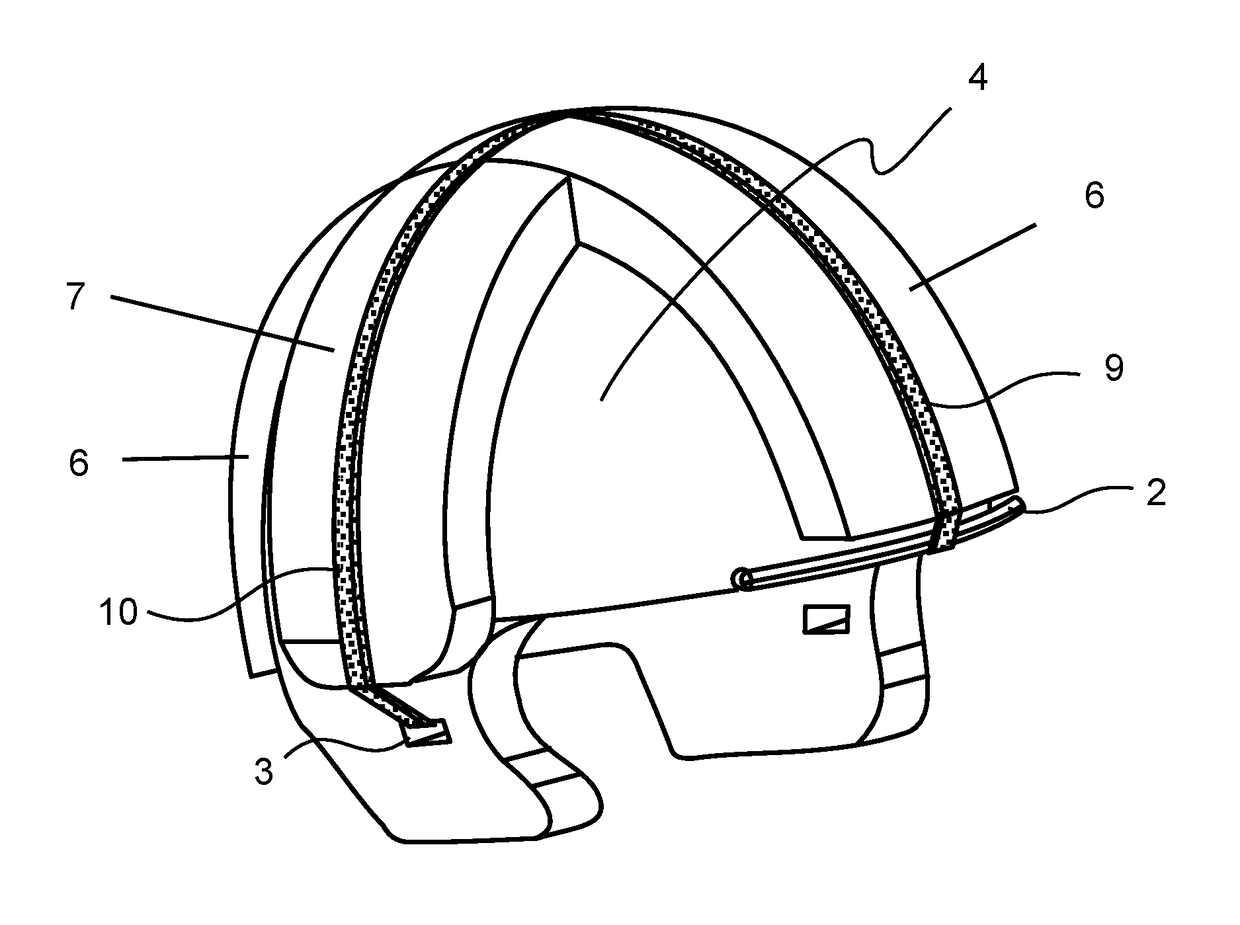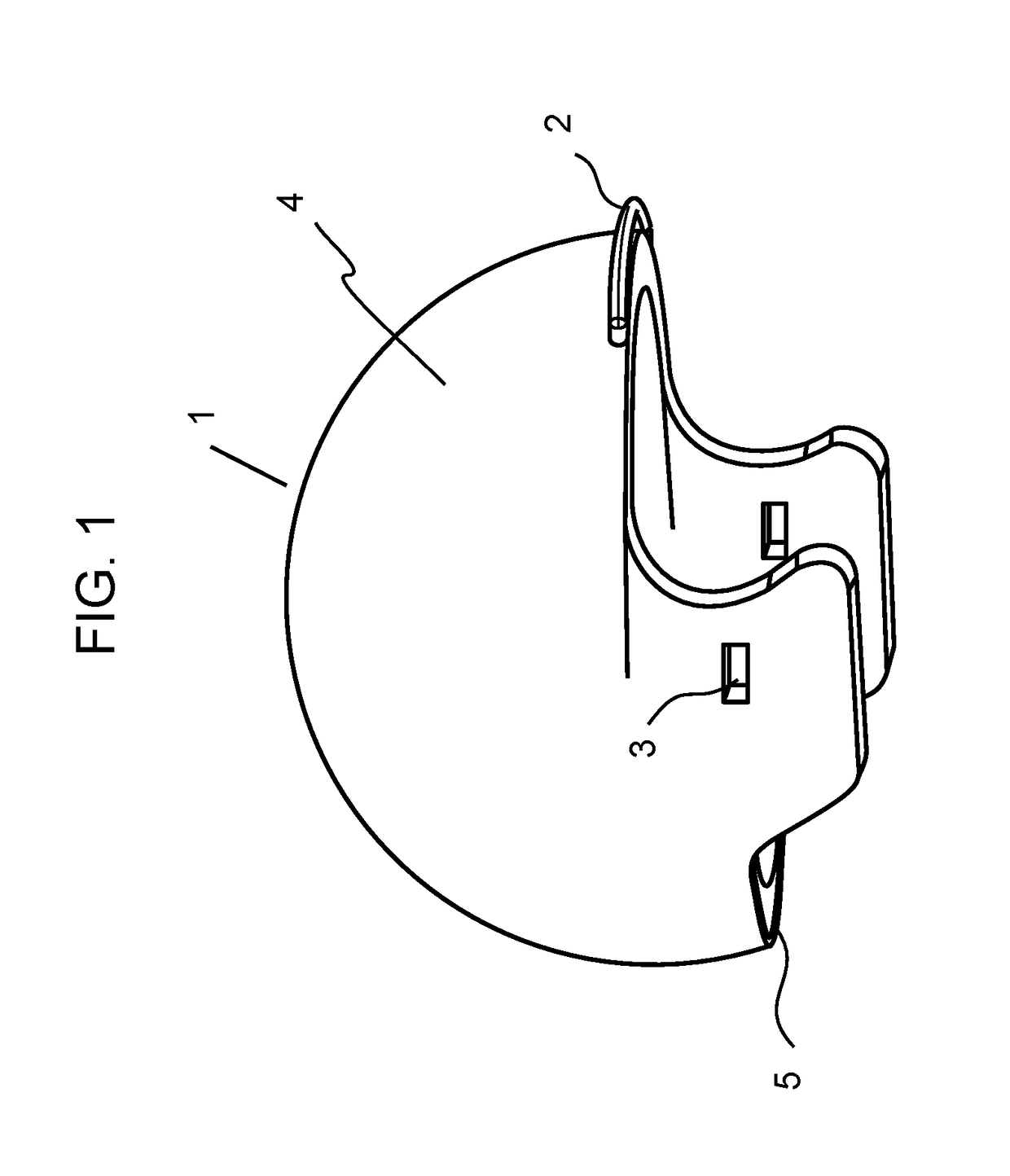Method and apparatus for preventing concussions
- Summary
- Abstract
- Description
- Claims
- Application Information
AI Technical Summary
Benefits of technology
Problems solved by technology
Method used
Image
Examples
Embodiment Construction
[0053]The present invention improves protective headgear by affixing cushioning (or pads) to the outside of the headgear. The cushioning elements may be pre-formed or substantially flat, flexible planks of material that are made conform to the headgear by the anchoring mechanism. The anchoring mechanism consists of straps and clips that attach to the helmet, and sandwich the pads between the straps and exterior surface of the helmet. The preferred embodiment of the strap is a narrow, thin VELCRO® wrap (or strap) with its opposite sides latched onto one another. Such self-latching VELCRO® straps minimize the number of discrete parts needed to anchor the pads to the helmet and reduce costs.
[0054]The principal pad is a strip that runs over the crown of the helmet from front to back. This makes the helmet resemble a Mohawk haircut, hence the term “Mohawk strip.” The anchor points for the Mohawk strip are the facemask lattice in the front of the helmet and a small clip in the back. A lon...
PUM
 Login to View More
Login to View More Abstract
Description
Claims
Application Information
 Login to View More
Login to View More - R&D
- Intellectual Property
- Life Sciences
- Materials
- Tech Scout
- Unparalleled Data Quality
- Higher Quality Content
- 60% Fewer Hallucinations
Browse by: Latest US Patents, China's latest patents, Technical Efficacy Thesaurus, Application Domain, Technology Topic, Popular Technical Reports.
© 2025 PatSnap. All rights reserved.Legal|Privacy policy|Modern Slavery Act Transparency Statement|Sitemap|About US| Contact US: help@patsnap.com



